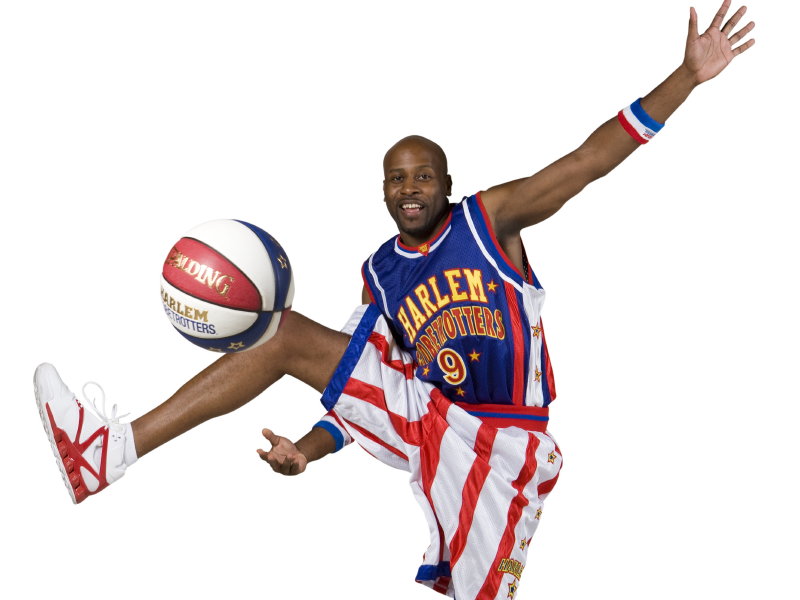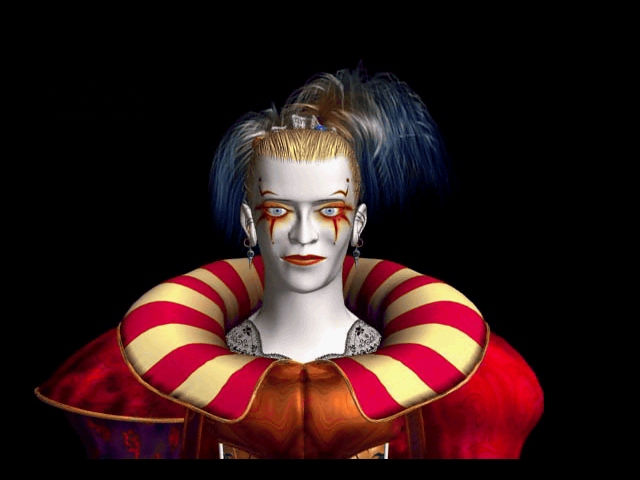Whew, back to vidya games. It feels good man, it really does. Been playing a lot of video games lately. Not like it makes a difference I guess, but I've been playing them a lot more than usual. Going back to Marvel vs. Capcom for the arcades, to Spider-Man on PSX, Castlevania... Some off shoot PC games like
I Wanna Be The Guy, which if you haven't played it, you should. Sadists would love it instantly, being mind-numbingly difficult as it is, but there's a certain addictiveness about it that keeps you coming back for more, even when it becomes so frustrating that you'd rather nail your hand to the wall.
No, there's no picture for that. I'd rather not check.
Anyway, I remember part of my childhood just getting into playing Resident Evil: Director's Cut on PSX, and being terrified of it for months. It was something I had never experienced before. The atmosphere of the old mansion was perfect, and hearing any kind of noise made me jump like a little girl. I played the sequels after adjusting, and still,
every time, those games would find a way to creep the living shit out of me. Eventually, I got used to it and bested those games because FUCK YEAH I KNEW I COULD!
 |
| Fuck. Yeeeeeaaahhhhhhh. |
Until I rented Silent Hill.
I wish I had known at my tender age of 9 that this game was not meant for children. It's incredibly scary, and not in a "there's a scary monster down the dark hallway hurry up and shoot it" way, but in the "what the fuck i don't even" way. I honestly don't know how to describe the fear I felt experiencing that game from start to finish. It's definitely nothing normal and not something a 9 year old should be playing.
But my mom didn't give a shit. She rented it for me and single handedly fucked me up for life. Maybe that was her plan. Maybe my mom is evil. MAYBE MY MOM IS SILENT HILL. How fucking creepy would that be?
Well, if you haven't played any of the games in the long running series, then you wouldn't know. I'll start with the first entry, and hopefully I'll retain my sanity throughout this writing. Hey, did you hear something?
Silent Hill - Playstation - 1999 - Please end this madness for Christ's sake!
Am I being too liberal with titles already? Anyway, Silent Hill marked Konami's entry into the Survival Horror realm that had long been dominated by Resident Evil, and boy did it
really put it's ugly foot in the door. Resident Evil had a cheesy plot, cheesy characters, cheesy dialog... it was just
cheese. As revolutionary as it was at the time, Silent Hill came and took it so many steps further.
For starters, the game doesn't use a fixed camera and pre-rendered backgrounds. It's all rendered in glorious, blocky 3D, courtesy of the Playstation's limited hardware. However, for the time the game was pretty amazing. It's one of the first games I know of to use dynamic lighting, and do it incredibly well. One minute you're in the foggy daylit streets, and the next minute you're in engulfing darkness with a flashlight illuminating the way. I CANNOT STRESS THAT ENOUGH. The atmosphere that little flashlight builds is absolutely crazy. It really makes you question what is around the next corner.
-17.jpg) |
| Yep. 9 years old right here. |
Building to the atmosphere, we have the radio. Basically, it emits white noise when there are enemies around, but it's enough to make you stop in your tracks. It starts as a small little noise, but as you get closer to your enemy, the fucking thing starts going crazy, getting louder and louder. It's one of the reasons this game still scares the living piss out of me. If I ever saw one in real life and it started making that noise I would probably die from shock. It's just one of the mainstays of this game and one that would go on to the later games in the series.
If Resident Evil is the king of horror games, then Silent Hill surely takes the cake for psychological horror. It explored new avenues that made it stand out. Fans still theorize about the game's story, but the general consensus goes something like this:
Silent Hill has a way of summoning people to it. In this case, it happens to be Harry Mason and his adopted daughter Cheryl. While driving to Silent Hill, a girl appears in the road and causes Harry to swerve off, crashing somewhere into the town. Cheryl goes missing, and Harry sets off to find her, meeting a few characters along the way. I say summoned because, 7 years before this all takes place, um, fuck this I'll just paste the wikipedia entry:
"
Harry Mason had woken up in a cafe and meets police officer named Cybil Bennet--an officer from Brahms, the next town over. Cybil Bennett and realizes that Cheryl is missing. Silent Hill is deserted and foggy, with snow falling out of season. Harry also meets Dahlia Gillespie, who gives him a charm she calls the "Flauros"; Doctor Michael Kaufmann, director of Silent Hill's Alchemilla Hospital; and nurse Lisa Garland, who worked at Alchemilla.
Harry encounters a symbol marked throughout Silent Hill; Dahlia tells
him that the girl from the road is a demon spreading the symbol, and
urges him to stop her to prevent the darkness spreading with the symbol,
and thereby save his daughter. Harry later encounters Cybil, who is possessed and attacks him. The player may be able to save her if they retrieved a particular item earlier, but if not they are forced to kill her or die.
The girl appears again, and is put under Dahlia's control by the
Flauros. Dahlia arrives and explains that she manipulated Harry into
trapping it, since only he could approach it. It is a phantasm of her daughter Alessa, who possesses vast supernatural powers. Harry awakens in a logicless void known officially only as "nowhere". He encounters Lisa, who realizes she is dead and begins bleeding; Harry flees, horrified. Her diary reveals that she nursed Alessa during a secret forced hospitalization of the latter in Alchemilla.
Harry soon finds Dahlia along with the apparition of Cheryl and
Alessa, charred. Seven years earlier, Dahlia had conducted a ritual that
impregnated Alessa with the cult's deity through immolation; Alessa survived because her status as the deity's "vessel" rendered her immortal. Alessa's resistance to the ritual caused her soul to be bisected, preventing the birth. One half of her soul went to baby Cheryl, whom Harry and his wife had adopted. Dahlia then cast a spell that would draw it back to Alessa.
Sensing Cheryl's return, Alessa manifested the symbols in the town to
prevent the birth. During the endings in which Cybil survives, Dahlia
reveals these symbols to be repellent. With Alessa's plan thwarted and her soul rejoined, the deity is revived and possesses her."
...Did you get all that? Can we agree that Silent Hill goes much farther than Resident Evil ever has? And guess what?! The game has 5 endings depending on what you do. While Silent Hill certainly doesn't please in the voice acting category, it still does it much better than other games at the time did. All the characters sound the way they should; Harry being the "everyman", he sounds like it. He's clumsy, he's soft-spoken, and he says "Huh?" a lot. The more devious characters, again, sound perfect for their roles. It's a pretty well-crafted game for a first release.
But damn is it fucking twisted. There is gore, and lots of it. Silent Hill takes gore to a new level. When the world changes and goes to what fans call the "Otherworld" is when the game really shines. Walls turn to rusty, bloody, fecal (?), fleshy counter-parts of their regular forms. The floors change to rusted steel chain link fencing, or something else that isn't right. Here's a
video of it, happening at only 5 minutes into the game!
You will also notice the music, if you want to call it that. It's more of an ambient rhythm. Sometimes you will have music, but most of the time it's either silence (hur hur hur) or some kind of heart-pounding, disturbing... ambiance. I don't really know how to explain it. All I know is it freaks me the fuck out. It took me until I was about 17 years old to play this game from start to finish because of all of this shit. It just fits together in a nice visceral package. It has to be played and experienced.
It begs you to play it.
 | |
| If you can handle that sort of thing. |
 Silent Hill 2 - Playstation 2, Xbox - 2001 - Turn the mind fucks up to 11.
Silent Hill 2 - Playstation 2, Xbox - 2001 - Turn the mind fucks up to 11.
A Spinal Tap reference in this kind of post? How dare me! Anyway, released 2 years later on the much more powerful Playstation 2, Silent Hill 2 returned to once again scare the living fuck out of gamers worldwide. Except the Japanese. Nothing scares the Japanese. They probably play Silent Hill 2 when the family is all there, like a little bonding moment.
Silent Hill 2 doesn't continue the first. If we were to piece the games in chronological order, you wouldn't be able to. The first and third games go together loosely, and the second and fourth games go together loosely. THE SERIES ARE IT'S OWN MINDFUCK. Anyway, Silent Hill 2 stars James Sunderland as he travels to Silent Hill to find his dead wife Mary. Sounds pretty sketchy already doesn't it? Well, that's for you to find out as you play along.
Silent Hill 2 is a classic. It's even better than the first one. Not only are the graphics much improved to make the experience that much more real, but it's story is much better. You'll meet a new cast of characters this time around, and they all have their own issues that go much deeper than the first game. For example, the first person you meet is a girl named Angela. She seems pretty shy and a little afraid at first, and explains she's there to find her parents.
Why is this relevant to you? Because you find out that her father raped and abused her numerous times. There's even an enemy that hints towards this. And the place you fight this enemy?
 |
| SEX. EVERYWHERE. |
Those holes? Yeah, a metal rod goes in and out of them. Notice the fleshy textures of the walls and floor. That's just a little taste of what you can expect from Silent Hill 2. It's
that fucked up and it doesn't hesitate to let you know.
And lets not forget Pyramid Head, the game's villain. If ever there was a fucked up design for a monster, this one certainly takes the cake:
Wait a second, do I really need a picture? Everyone knows who he is! Even if you haven't played this game or watched that shitty movie. He's the ultimate punisher. He wields the biggest knife I've ever seen. He's just plain creepy. Oh, and he
rapes a monster. Yeeeeaaaahhhhhhhh........
Graphically, the game is gorgeous. The locales this time around are much more sinister. The sound department did a great job in making you jump out of your seat as well.
Here's what you can expect from this game. Little moments like that fill this game, and are bound to make you uneasy, or just frighten you to death.
The music is also something to behold. Silent Hill 2 is widely recognized for it's soundtrack, which is just excellent. You'll find some eerie tunes as you explore a hospital, a hotel, and an apartment building, and all of them are so unsettling that you'll want to escape as fast as possible.
All in all, from the atmosphere, the locales, the characters, and the best graphics yet, Silent Hill 2 marks the go-to title if you want to mess with your own head. It also has 5 endings that fans have argued about, and still do to this day. Just reading about the theories behind them is interesting and extremely disturbing in itself. A must for any gamer. It's that damn good. Also, it has a side scenario which adds to the story, and it's pretty interesting too.
Being one of my favorite franchises, Silent Hill still manages to make me uneasy. Just having me explain this to you doesn't do it justice; you need to play these games and find out for yourself. Think of creepypastas you've read, or whatever thing that scares you the most. Silent Hill evokes that feeling and does it so well. Just talking about it is making me uneasy here in my dark, quiet, empty house....
I just heard that noise again....
I'll be talking about more Silent Hill in the future. Don't worry, I'll cover three and four, as well as the newer ones!








-17.jpg)




















